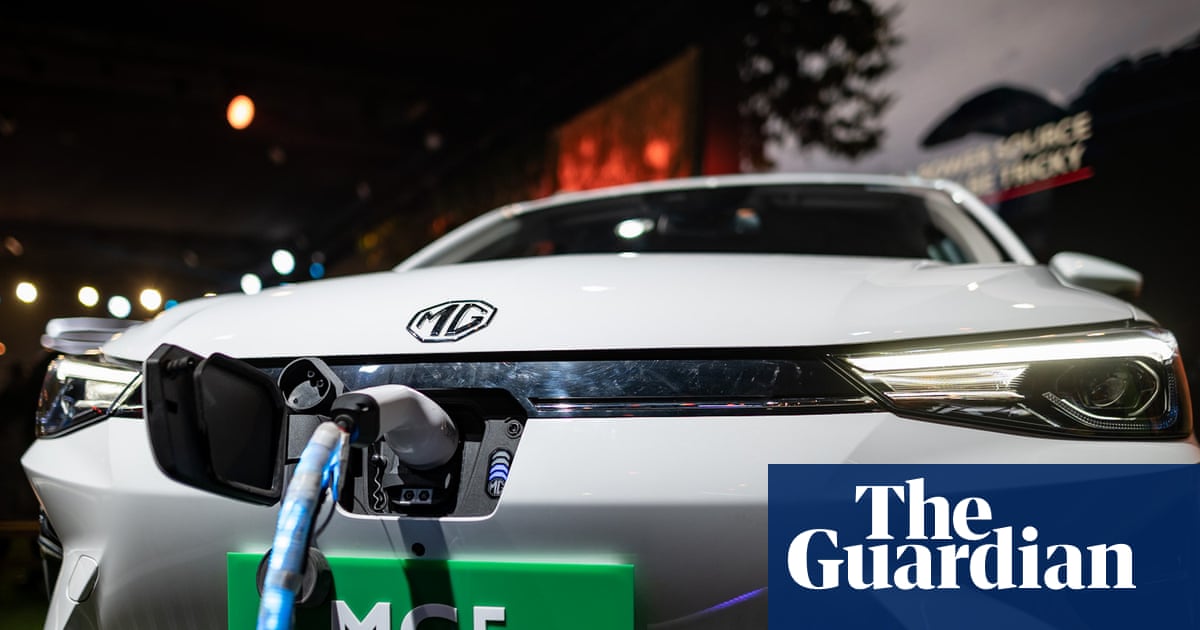- Engineers create artificial neuron that acts like the real thing Nanowerk
- Artificial Neurons Talk Directly to Living Cells in a First IEEE Spectrum
- Scientists Create Artificial Neuron That ‘Whispers’ to Real Brain Cells Indian Defence Review
Blog
-
Engineers create artificial neuron that acts like the real thing – Nanowerk
-

Progress on share buyback programme
Amsterdam,
ING announced today that, as part of our €2.0 billion share buyback programme announced on 2 May 2025, in total 4,239,000 shares were repurchased during the week of 6 October 2025 up to and including 10 October 2025.
The shares were repurchased at an average price of €21.32 for a total amount of €90,367,787.70. For detailed information on the daily repurchased shares, individual share purchase transactions and weekly reports, see share buy back programme.
In line with the purpose of the programme to reduce the share capital of ING, the total number of shares repurchased under this programme to date is 92,123,891 at an average price of €19.67 for a total consideration of €1,811,927,494.72. To date approximately 90.60% of the maximum total value of the share buyback programme has been completed.
Note for editors
More on investor information, go to the investor relations section on this site.
For news updates, go to the newsroom on this site or via X (@ING_news feed).
For ING photos such as board members, buildings, go to Flickr.
ING PROFILE
ING is a global financial institution with a strong European base, offering banking services through its operating company ING Bank. The purpose of ING Bank is: empowering people to stay a step ahead in life and in business. ING Bank’s more than 60,000 employees offer retail and wholesale banking services to customers in over 100 countries.
ING Group shares are listed on the exchanges of Amsterdam (INGA NA, INGA.AS), Brussels and on the New York Stock Exchange (ADRs: ING US, ING.N).
ING aims to put sustainability at the heart of what we do. Our policies and actions are assessed by independent research and ratings providers, which give updates on them annually. ING’s ESG rating by MSCI was reconfirmed by MSCI as ‘AA’ in August 2024 for the fifth year. As of December 2023, in Sustainalytics’ view, ING’s management of ESG material risk is ‘Strong’. Our current ESG Risk Rating, is 17.2 (Low Risk). ING Group shares are also included in major sustainability and ESG index products of leading providers. Here are some examples: Euronext, STOXX, Morningstar and FTSE Russell. Society is transitioning to a low-carbon economy. So are our clients, and so is ING. We finance a lot of sustainable activities, but we still finance more that’s not. Follow our progress on ing.com/climate.
Important legal information
Elements of this press release contain or may contain information about ING Groep N.V. and/ or ING Bank N.V. within the meaning of Article 7(1) to (4) of EU Regulation No 596/2014 (‘Market Abuse Regulation’).
ING Group’s annual accounts are prepared in accordance with International Financial Reporting Standards as adopted by the European Union (‘IFRS- EU’). In preparing the financial information in this document, except as described otherwise, the same accounting principles are applied as in the 2024 ING Group consolidated annual accounts. All figures in this document are unaudited. Small differences are possible in the tables due to rounding.
Certain of the statements contained herein are not historical facts, including, without limitation, certain statements made of future expectations and other forward-looking statements that are based on management’s current views and assumptions and involve known and unknown risks and uncertainties that could cause actual results, performance or events to differ materially from those expressed or implied in such statements. Actual results, performance or events may differ materially from those in such statements due to a number of factors, including, without limitation: (1) changes in general economic conditions and customer behaviour, in particular economic conditions in ING’s core markets, including changes affecting currency exchange rates and the regional and global economic impact of the invasion of Russia into Ukraine and related international response measures (2) changes affecting interest rate levels (3) any default of a major market participant and related market disruption (4) changes in performance of financial markets, including in Europe and developing markets (5) fiscal uncertainty in Europe and the United States (6) discontinuation of or changes in ‘benchmark’ indices (7) inflation and deflation in our principal markets (8) changes in conditions in the credit and capital markets generally, including changes in borrower and counterparty creditworthiness (9) failures of banks falling under the scope of state compensation schemes (10) non- compliance with or changes in laws and regulations, including those concerning financial services, financial economic crimes and tax laws, and the interpretation and application thereof (11) geopolitical risks, political instabilities and policies and actions of governmental and regulatory authorities, including in connection with the invasion of Russia into Ukraine and the related international response measures (12) legal and regulatory risks in certain countries with less developed legal and regulatory frameworks (13) prudential supervision and regulations, including in relation to stress tests and regulatory restrictions on dividends and distributions (also among members of the group) (14) ING’s ability to meet minimum capital and other prudential regulatory requirements (15) changes in regulation of US commodities and derivatives businesses of ING and its customers (16) application of bank recovery and resolution regimes, including write down and conversion powers in relation to our securities (17) outcome of current and future litigation, enforcement proceedings, investigations or other regulatory actions, including claims by customers or stakeholders who feel misled or treated unfairly, and other conduct issues (18) changes in tax laws and regulations and risks of non-compliance or investigation in connection with tax laws, including FATCA (19) operational and IT risks, such as system disruptions or failures, breaches of security, cyber-attacks, human error, changes in operational practices or inadequate controls including in respect of third parties with which we do business and including any risks as a result of incomplete, inaccurate, or otherwise flawed outputs from the algorithms and data sets utilized in artificial intelligence (20) risks and challenges related to cybercrime including the effects of cyberattacks and changes in legislation and regulation related to cybersecurity and data privacy, including such risks and challenges as a consequence of the use of emerging technologies, such as advanced forms of artificial intelligence and quantum computing (21) changes in general competitive factors, including ability to increase or maintain market share (22) inability to protect our intellectual property and infringement claims by third parties (23) inability of counterparties to meet financial obligations or ability to enforce rights against such counterparties (24) changes in credit ratings (25) business, operational, regulatory, reputation, transition and other risks and challenges in connection with climate change, diversity, equity and inclusion and other ESG-related matters, including data gathering and reporting and also including managing the conflicting laws and requirements of governments, regulators and authorities with respect to these topics (26) inability to attract and retain key personnel (27) future liabilities under defined benefit retirement plans (28) failure to manage business risks, including in connection with use of models, use of derivatives, or maintaining appropriate policies and guidelines (29) changes in capital and credit markets, including interbank funding, as well as customer deposits, which provide the liquidity and capital required to fund our operations, and (30) the other risks and uncertainties detailed in the most recent annual report of ING Groep N.V. (including the Risk Factors contained therein) and ING’s more recent disclosures, including press releases, which are available on www.ING.com.
This document may contain ESG-related material that has been prepared by ING on the basis of publicly available information, internally developed data and other third-party sources believed to be reliable. ING has not sought to independently verify information obtained from public and third-party sources and makes no representations or warranties as to accuracy, completeness, reasonableness or reliability of such information.
Materiality, as used in the context of ESG, is distinct from, and should not be confused with, such term as defined in the Market Abuse Regulation or as defined for Securities and Exchange Commission (‘SEC’) reporting purposes. Any issues identified as material for purposes of ESG in this document are therefore not necessarily material as defined in the Market Abuse Regulation or for SEC reporting purposes. In addition, there is currently no single, globally recognized set of accepted definitions in assessing whether activities are “green” or “sustainable.” Without limiting any of the statements contained herein, we make no representation or warranty as to whether any of our securities constitutes a green or sustainable security or conforms to present or future investor expectations or objectives for green or sustainable investing. For information on characteristics of a security, use of proceeds, a description of applicable project(s) and/or any other relevant information, please reference the offering documents for such security.This document may contain inactive textual addresses to internet websites operated by us and third parties. Reference to such websites is made for information purposes only, and information found at such websites is not incorporated by reference into this document. ING does not make any representation or warranty with respect to the accuracy or completeness of, or take any responsibility for, any information found at any websites operated by third parties. ING specifically disclaims any liability with respect to any information found at websites operated by third parties. ING cannot guarantee that websites operated by third parties remain available following the publication of this document, or that any information found at such websites will not change following the filing of this document. Many of those factors are beyond ING’s control.
Any forward-looking statements made by or on behalf of ING speak only as of the date they are made, and ING assumes no obligation to publicly update or revise any forward-looking statements, whether as a result of new information or for any other reason.
This document does not constitute an offer to sell, or a solicitation of an offer to purchase, any securities in the United States or any other jurisdiction.
Continue Reading
-

Zong Partners with Pakistan Idol to Power the Nation’s Biggest Music Phenomenon
Zong, Pakistan’s leading technology innovation company, has partnered with Pakistan Idol as its official digital partner, bringing technology, entertainment, and connectivity together like never before. This landmark collaboration…
Continue Reading
-

Third quarter 2025 trading statement | News and insights
a Refer to bp’s second quarter and half year 2025 group results announcement and bp.com for full text.
b Underlying effective tax rate is sensitive to a range of factors, including the volatility of the price environment and its impact on the geographical mix of the group’s profits and losses.*
* See Glossary.
Glossary
Capital expenditure is total cash capital expenditure as stated in the condensed group cash flow statement. Capital expenditure for the operating segments, gas & low carbon energy businesses and customers & products businesses is presented on the same basis.
Replacement cost (RC) profit or loss reflects the replacement cost of inventories sold in the period and is calculated as profit or loss attributable to bp shareholders, adjusting for inventory holding gains and losses (net of tax). RC profit or loss for the group is a non-IFRS measure. The nearest equivalent measure on an IFRS basis is profit or loss attributable to bp shareholders.
Refining indicator margin (RIM) is a simple indicator of the weighted average of bp’s crude slate and product yield as deemed representative for each refinery. Actual margins realized by bp may vary due to a variety of factors, including the actual mix of a crude and product for a given quarter.
Technical service contract (TSC) – Technical service contract is an arrangement through which an oil and gas company bears the risks and costs of exploration, development and production. In return, the oil and gas company receives entitlement to variable physical volumes of hydrocarbons, representing recovery of the costs incurred and a profit margin which reflects incremental production added to the oilfield.
Underlying production – 2025 underlying production, when compared with 2024, is production after adjusting for acquisitions and divestments, curtailments, and entitlement impacts in our production-sharing agreements/contracts and technical service contract*.
Underlying RC profit or loss before interest and tax for the operating segments or customers & products businesses is a non-IFRS measure and is calculated as RC profit or loss including profit or loss attributable to non-controlling interests before interest and tax for the operating segments and excluding net adjusting items for the respective operating segment or business. The nearest equivalent measure on an IFRS basis for segments and businesses is RC profit or loss before interest and taxation.
Underlying effective tax rate (ETR) is a non-IFRS measure. The underlying ETR is calculated by dividing taxation on an underlying replacement cost (RC) basis by underlying RC profit or loss before tax. Taxation on an underlying RC basis for the group is calculated as taxation as stated on the group income statement adjusted for taxation on inventory holding gains and losses and total taxation on adjusting items. Information on underlying RC profit or loss is provided below. Taxation on an underlying RC basis presented for the operating segments is calculated through an allocation of taxation on an underlying RC basis to each segment. bp believes it is helpful to disclose the underlying ETR because this measure may help investors to understand and evaluate, in the same manner as management, the underlying trends in bp’s operational performance on a comparable basis, period on period. Taxation on an underlying RC basis and underlying ETR are non-IFRS measures. The nearest equivalent measure on an IFRS basis is the ETR on profit or loss for the period.
Continue Reading
-

Nano Banana AI is Now LIVE in Google Lens and NotebookLM
Google’s incredible Nano Banana image editing model is coming to Google Lens and NotebookLM. Nano Banana is already available in the Gemini app for image editing and creation. Now, with the latest Google update, you can directly snap a…
Continue Reading
-
Harvard expert shares gut-health boosting ‘checklist’ to carry out every morning
A Harvard-trained doctor has revealed eight things he does every morning to look after his gut health in a viral Instagram post.
Dr Saurabh Sethi, a gastroenterologist, from California in the US, regularly shares advice to his more than 1.3…
Continue Reading
-

Africa’ Takes Show to Brazil
Showmax is expanding its hit “Real Housewives” franchise with “The Real Housewives Ultimate Girls Trip: Africa,” bringing together standout cast members from South Africa, Kenya and Nigeria for a Brazilian getaway.
The latest…
Continue Reading
-

MG wants us to pay £500-plus to remedy rogue electric car | Motoring
Our MG5 electric car became dangerously out of control, but MG won’t do anything about it.
The car suffered a power system malfunction after we had used a charger at a motorway service station.
It wouldn’t respond to any controls, including the off button, so we called the AA. The patrolman managed to get it started, then decided to give it a test drive. My family was onboard as it was pouring.
When he put the car into reverse, it shot forward and failed to stop when he applied the brake. It rammed into the AA van and its wheels began spinning and smoking as it tried to accelerate.
We all managed to exit the car, and the patrolman eventually succeeded in turning it off from the outside. We were told it was not safe to drive.
The AA arranged a transporter to take it to a dealership and paid for the repairs, which cost £2,500. The patrol van was also damaged.
The dealer has investigated the fault, for which we are to be charged £500, but has found nothing. MG has closed the case, and insists we request a further investigation at our own expense.
Six weeks on, the car is still with the dealership. We don’t want to drive it until we know it is safe, but can’t afford to keep paying for investigations.
AB, East Lothian
You are not the only MG owner whose car has seemingly gone rogue. One man was forced to drive his car into a police van after his brakes failed.
I asked the AA to send me its technician report, which confirms that the car “surged forward” when put into reverse.
It’s unsurprising that you are reluctant to get behind the wheel until you know what’s wrong and, since the car is still under warranty you are reluctant to throw your own money at the problem.
MG Motor UK seems remarkably unperturbed given the harm that could be caused by an out-of-control EV. Although the dealership had recommended that MG’s technical department review the case and issue guidance, MG, instead, closed it.
MG, when you complained, merely apologised for the “inconvenience”.
It ignored my questions about whether the review requested by the dealer was conducted before the case was closed, and how many incidents involving power surges or loss it is aware of.
However, it speedily commissioned another, more detailed, investigation of the vehicle and conducted a 25-mile test drive after using a range of public charging points. You were not charged for this test and will not now be billed for the previous one.
It says: “MG treats all issues where a malfunction may have potentially occurred as a priority. No malfunctions with any of the relevant in-vehicle equipment, or the ability to charge the vehicle using various systems, were detected on the car.
“MG, and the authorised dealership, having carefully examined the vehicle, have concluded that an error occurred not related to the car. We will continue to support the customer with information and advice.”
This leaves you in a difficult position. Your car has been given a clean bill of health, but you have lost confidence in it. You have therefore decided that your best option is to sell.
We welcome letters but cannot answer individually. Email us at consumer.champions@theguardian.com or write to Consumer Champions, Money, the Guardian, 90 York Way, London N1 9GU. Please include a daytime phone number. Submission and publication of all letters is subject to our terms and conditions.
Continue Reading
-

PMD forecasts dry weather with cold nights in northern regions
The Pakistan Meteorological Department (PMD) has predicted mainly dry weather across most parts of the country on Tuesday, with cold conditions likely to prevail in hilly and northern areas during the night and early morning hours.
In Islamabad…
Continue Reading
